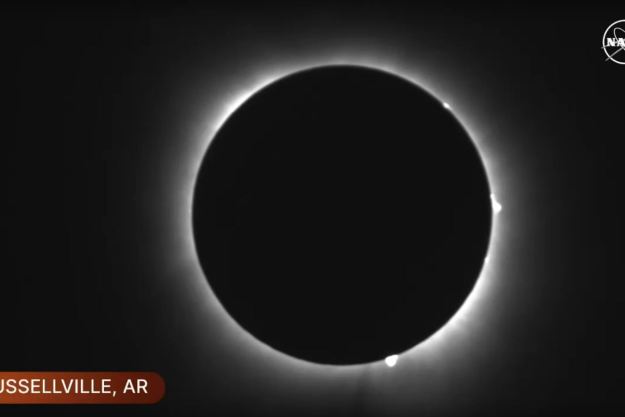NASA has released its latest monthly update on what to look out for in the skies over the coming weeks.
From around March 18, early risers can spot Saturn moving gradually toward Mars and Venus, with the trio able to be viewed with the naked eye around 45 minutes before sunrise — weather permitting, of course.
Toward the end of the month, from about March 28, our moon will join the party, creating a striking scene low in the east.

If early mornings aren’t your thing, then peer high toward the southwest during the March evenings to locate the tall, Y-shaped constellation of Taurus, the bull. If you have trouble locating it, one of these excellent astronomy apps will do the trick.
Once you have it in your sights, look at the center of Taurus (the bull’s face) and you’ll see a grouping of stars about 15 light-years across known as the Hyades star cluster. It’s known to be the closest open star cluster to our solar system and features hundreds of stars.
“An open cluster is a group of stars that are close together in space and loosely bound together by their mutual gravity,” NASA explains on its website. “These are stars that formed together around the same time, from the same cloud of dust and gas. Over time they blow away that leftover nebula material and drift apart. Because of this and their open, or diffuse, structures, they’re called ‘open’ clusters. Our own sun formed in a cluster like this, and studying these structures helps us understand how stars form and evolve.”
Remarkably, you don’t need a telescope to spot Hyades, either. Refer to the diagram below or again, fire up one of those astronomy apps for help.

Next up, how about checking out a star that’s known to have its own planets orbiting around it? “Locate these distant ‘suns’ for yourself and you’ll know you’re peering directly at another planetary system,” NASA says.
One to try for is Epsilon Tauri, the right eye of Taurus the bull. The orange dwarf star has a gas giant planet around eight times the mass of Jupiter, according to the space agency. You can also spot 7 Canis Majoris, the star at the heart of a constellation containing Sirius, the brightest star in the night sky. 7 Canis Majoris is orbited by two planets — a gas giant with almost twice the mass of Jupiter and another that’s a bit smaller than Jupiter, which, incidentally, is 11 times wider than Earth.

For NASA’s full rundown of this month’s skywatching treats, be sure to check out the video at the top of this page.
Editors' Recommendations
- NASA gives Starliner’s first crewed launch the go-ahead
- Voyager 1 spacecraft is still alive and sending signals to Earth
- Watch how NASA plans to land a car-sized drone on Titan
- NASA needs a new approach for its challenging Mars Sample Return mission
- Junk from the ISS fell on a house in the U.S., NASA confirms


